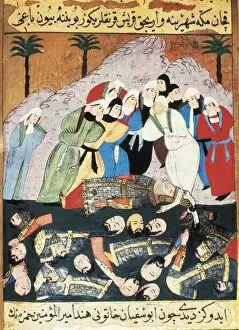Mutilate Collection
In a world where history has witnessed various instances of extreme acts, the concept of mutilation has often emerged as a shocking and gruesome reality
All Professionally Made to Order for Quick Shipping
In a world where history has witnessed various instances of extreme acts, the concept of mutilation has often emerged as a shocking and gruesome reality. From ancient civilizations to modern times, this dark aspect of human behavior continues to intrigue and horrify us. One such engraving titled "The Exultant Indians Mutilate the Dead Body" takes us back in time, reminding us of the brutalities inflicted upon fallen enemies. It serves as a stark reminder that even in victory, some would resort to barbaric practices. Moving forward to more recent events, we encounter images like "SHIITES IN ECSTASY" and "Ecstatic Moslems, " which depict religious rituals involving self-mutilation. These ceremonies showcase an intense devotion that leads individuals to inflict pain upon themselves as an expression of faith or penance. However, not all instances of mutilation are rooted in religious fervor. "The Dynamite Plot (engraving)" sheds light on darker motives behind such acts – those driven by violence and destruction rather than spiritual beliefs. Throughout history, conflicts have also witnessed acts of mutilation carried out by opposing forces against one another. The engraving depicting how "Turks Mutilate Rebels" during times of rebellion highlights the brutality faced by those who dared challenge authority or fight for their freedom. Even women have not been spared from these horrors; the Battle of Uhud introduces Hind, a woman who played a role in inflicting harm on her enemies during this historical clash. This instance challenges traditional gender roles while showcasing the extent people were willing to go for victory or revenge. Beyond wars and battles lie other realms where self-mutilation finds its place – yogis seeking enlightenment through physical sacrifice and Shiite devotees engaging in similar practices during festivals like Mohurrum Festival in Iran. These examples demonstrate how different cultures perceive self-harm as part of their spiritual journey or cultural traditions.








